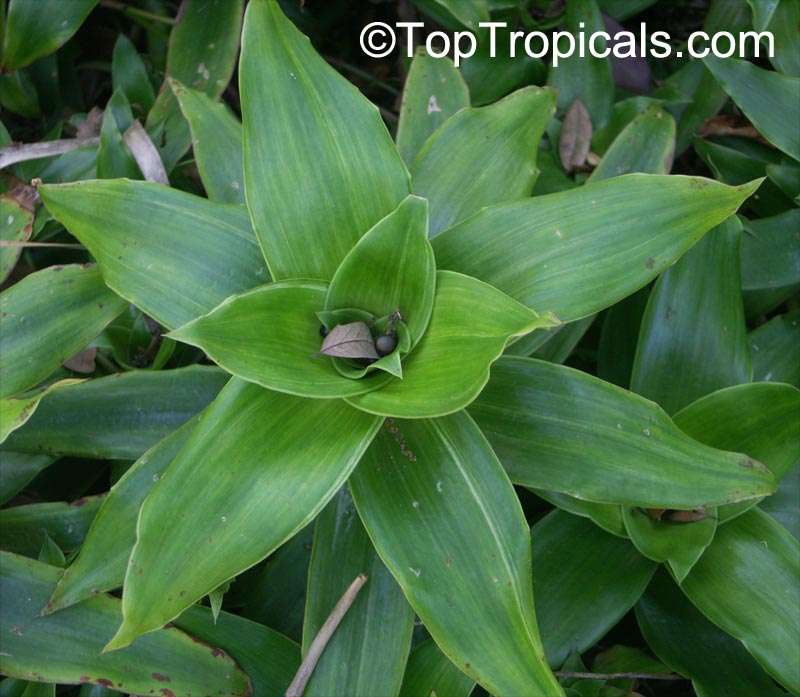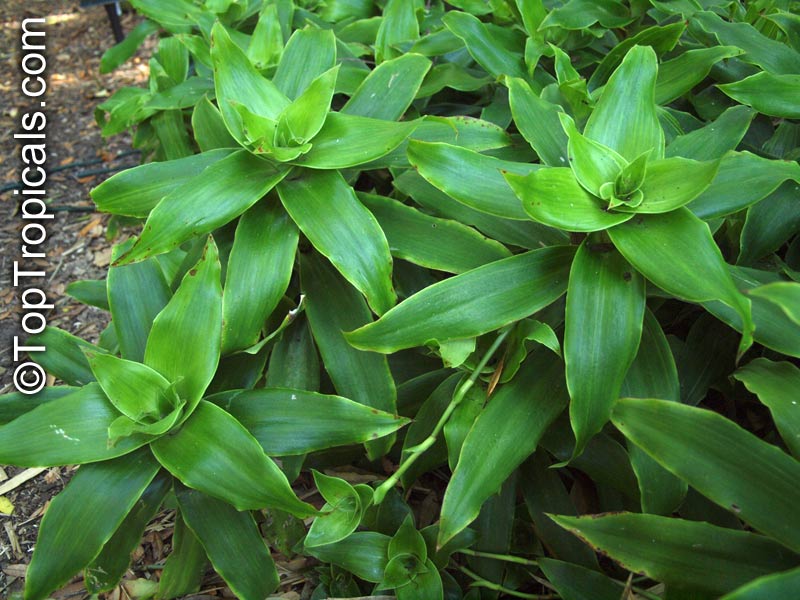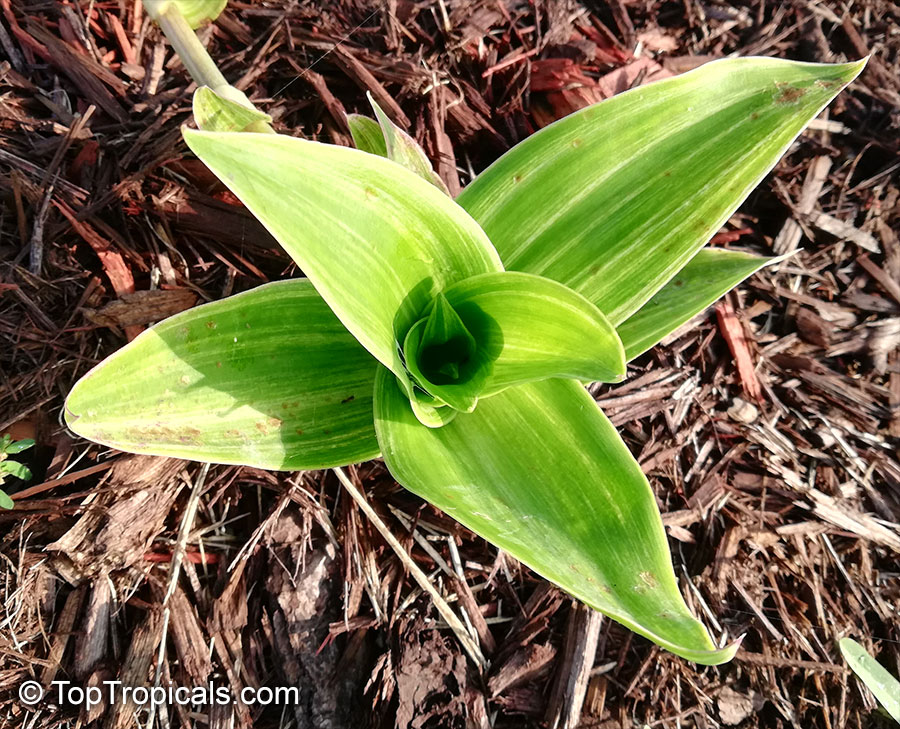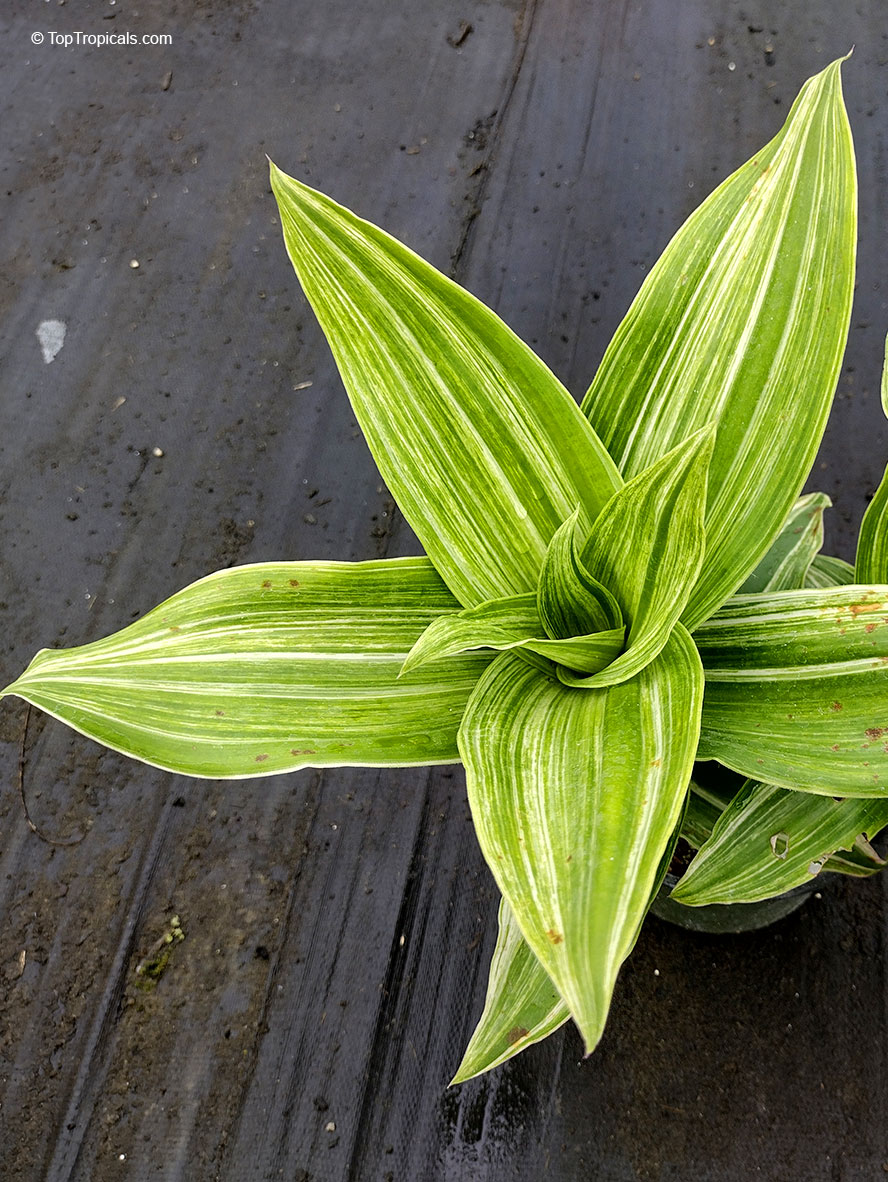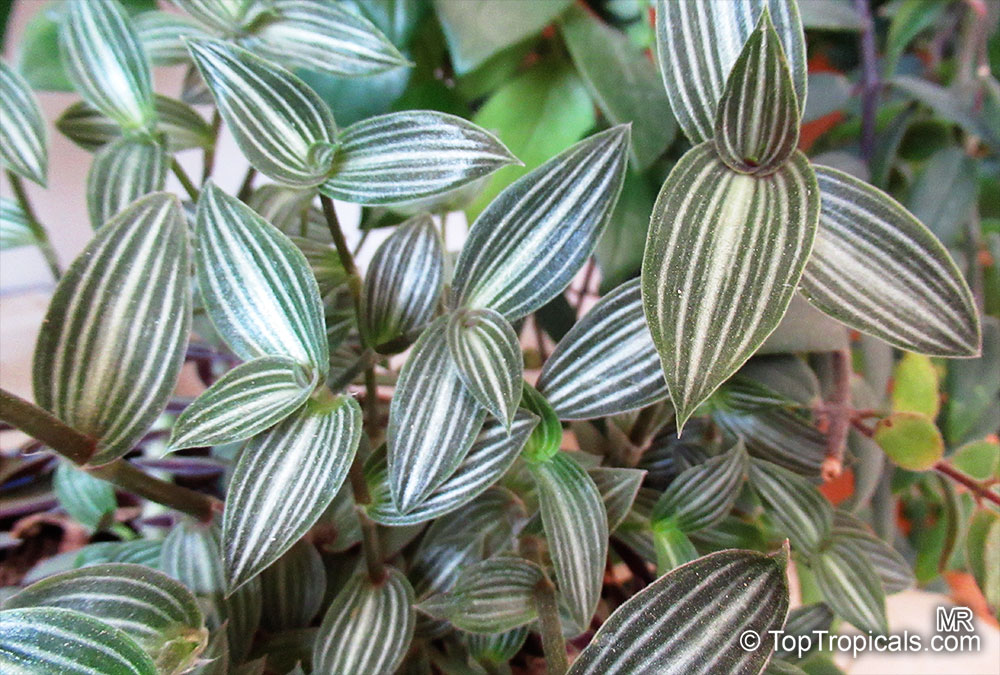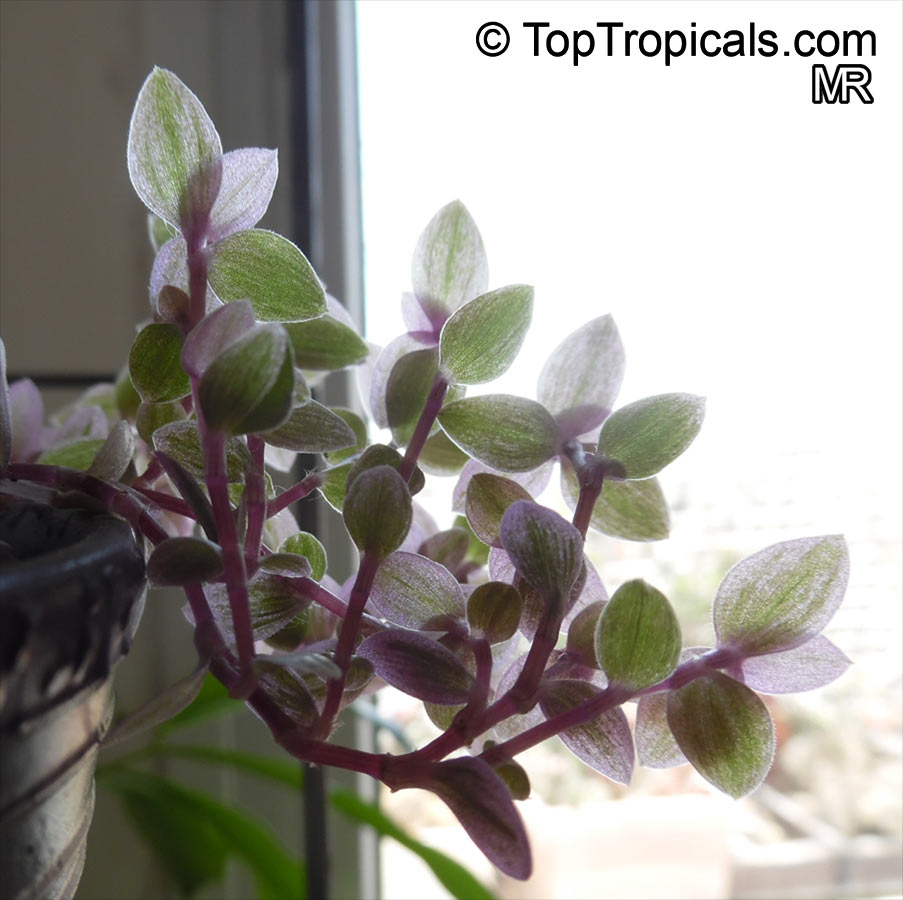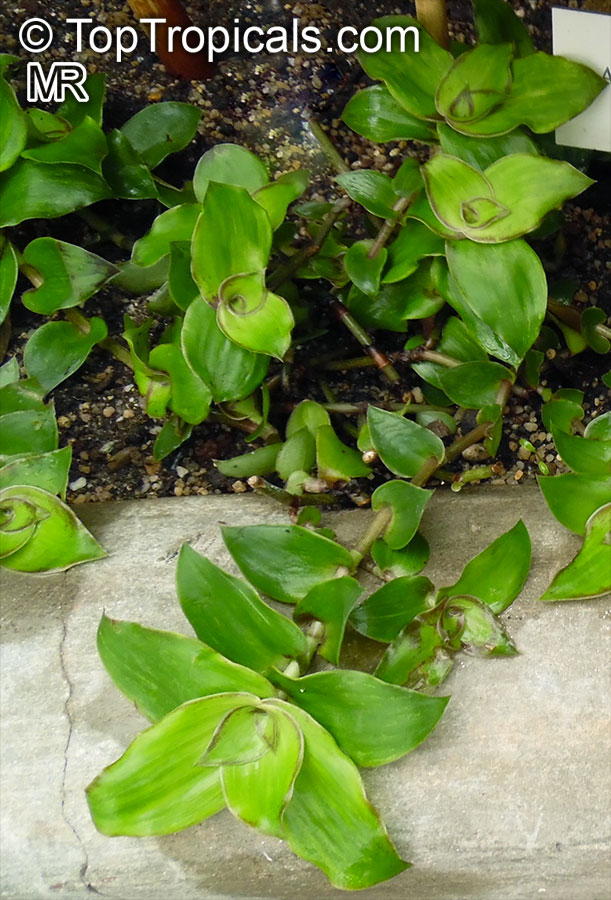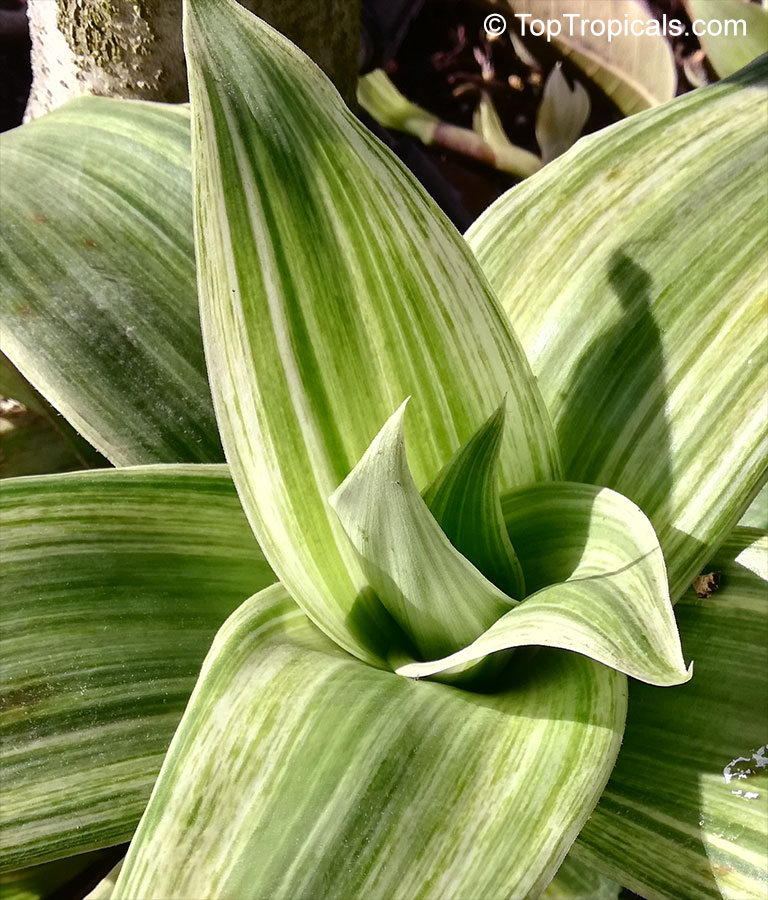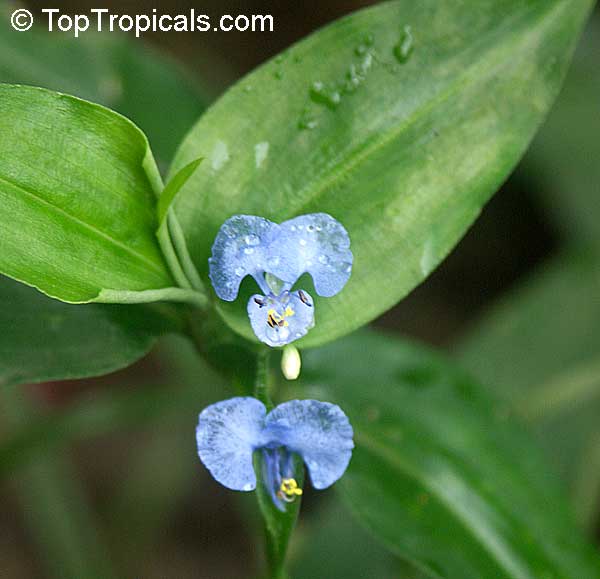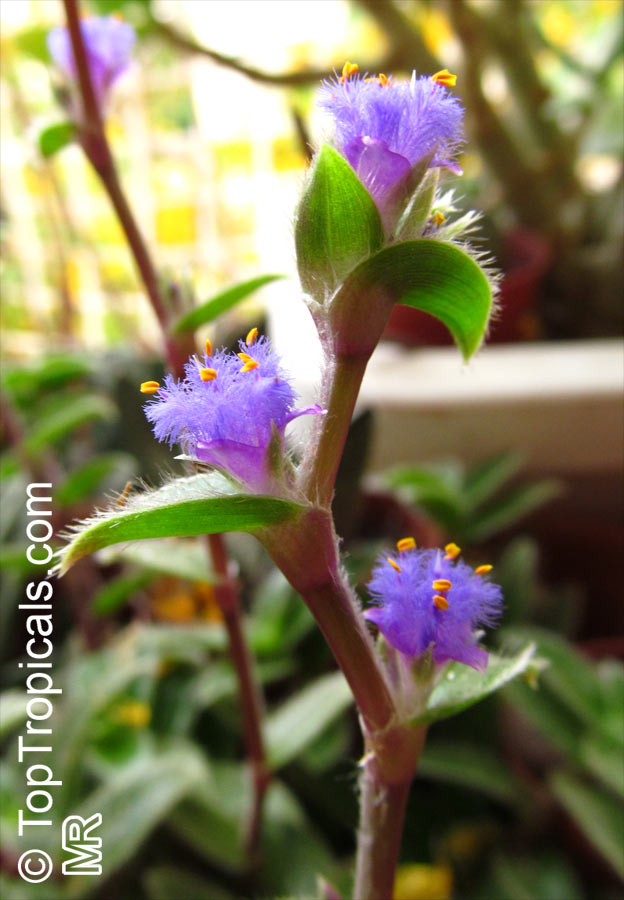Commelinaceae - Botanical Family
Top Tropicals Plant Encyclopedia
| Number of plants found: 31 | Next | 
|
Go to page: | 1 | 2 | 3 | 4 |
Botanical name: Aneilema acuminatum
Common name: Native Wandering Jew
Family: Commelinaceae
Origin: New Guinea




Aneilema acuminatum, also known as native wandering Jew, is a small ornamental shrub with beautiful foliage and bright, off-white flowers. Native to New Guinea and Southeast Asia, this perennial plant is easy to take care of and adds a lush touch to any garden.
This species is a fast-growing small shrub that can reach a height of two to five feet tall with attractive ovate or elliptic shaped leaves. Its leaves are greenish with a white-silver or purplish patterning. It produces white or off-white flowers that only last for a day each but bloom multiple times in a season.
Aneilema acuminatum will thrive best when planted in sandy soil in a semi-shady area that gets moderate sunlight. For optimal growth, provide regular watering throughout its growth cycle and make sure the soil drains properly. It is hardy for USDA Zones 9-11. For colder regions, the plant can be grown in a large container, which should be brought indoors over the winter season. Caring for the plant in a container should include providing enough water and ensuring it is in well-draining soil.
Overall, Aneilema acuminatum is an ideal plant to add to your garden. It is low maintenance, fast-growing and has lovely, vibrant flowers that will make any garden the envy of the neighborhood.
Botanical names: Callisia fragrans, Spironema fragrans
Common names: Basket Plant, Golden tendril, Russian Holistic Medicinal Plant
Family: Commelinaceae
Origin: Mexico
Hardiness: 25°F








Callisia fragrans is a low growing plant that has waxy leaves that have a slight purplish color underneath, reminding maize with alternating placement on its stem. Green leaves that will turn purplish at the edges when placed in strong light. It has small, white fragrant flowers arranged in clusters of three. This is a good groundcover for mild, moderately dry climates, as well as a nice container or hanging basket plant. With a good care Callissia fragrans can reach more than 3 feet high as an indoor plant. In this case you need to make a support to it that the plant wouldn't broken under its own weight.
It is not only a decoration plant, it has wide medicinal use in Europe and Russia. Active biological substances that are in Callissia fragrans can struggle with any types of infections, stimulate metabolic processes, strengthen immunity and circulatory system, has positive influence on growths. Substances from steroid group contained in Callissia fragrans give it these wonderful possibilities.
See article about this plant: Callisia fragrans, Golden Tendril - Holistic Medicinal Plant
Botanical name: Callisia gentlei var. elegans
Common name: Callisia
Cultivar: Elegans
Family: Commelinaceae
Origin: Mexico
Hardiness: 35°F






Callisia gentlei var. elegans (Striped Inch Plant) is a trailing perennial of Commelinaceae native to southern Mexico (Oaxaca, Chiapas), Guatemala, and Honduras. It makes mats or cascading shoots with thick, lance-shaped leaves marked by parallel silver stripes, and it bears small white three-petaled flowers at stem tips; in trade it is also seen as Callisia elegans.
Grow in bright shade to partial shade in a very free-draining mix, water thoroughly and let the top layer dry, and keep slightly on the dry side to prevent rot; stems are brittle but cuttings root easily. Suitable for hanging baskets or as a small groundcover. Outdoors it is best in USDA Zones 10-11 and is frost tender, performing reliably above about 45 F; in cooler regions overwinter containers indoors.
Botanical name: Callisia repens
Common names: Bolivian Jew, Turtle Vine, Inch plant
Family: Commelinaceae
Origin: Central and South America




Vigorous creeping vine with obicular, clasping leaves. Foliage is green on top and purple on the underside. It multiplies and spreads extremely quickly creating a luxurious mat of leaves. This plant is useful to keep those potted plants from drying out as it will form a thick mat at the base of taller plants.
Botanical name: Callisia soconuscensis
Common names: Callisia, Dragon Tail
Family: Commelinaceae
Origin: Mexico







The leaves are glossy green leaves with burgundy edges that grow in a spiral shape.
Botanical names: Cochliostema odoratissimum, Cochliostema jacobianum
Common name: Cochliostema
Family: Commelinaceae
Origin: Tropical America







Cochliostema odoratissimum (Cochliostema) is a small shrub native to tropical America, growing up to 2-5 feet tall. It enjoys semi-shade and regular water, although it should not be over-watered. It produces flowers that are fragrant and have bright blue, lavender, and purple petals. As a bonus, its flowers are also quite showy.
In USDA Zone 9-11 regions, Cochliostema can be grown in a pot. It does best in bright and warm places. If grown in colder regions, Cochliostema must be kept indoors during colder months and protected from frost. Cochliostema also benefits from filtered light and fertile soil. To keep the soil moist, water it regularly and supplement with a weak fertilizer every month.
Cochliostema is an attractive plant that provides a pleasant fragrance and adds color to a room. Its flowers can help make for a therapeutic atmosphere by providing a sense of relaxation and peace. If you have a place with the right temperature and humidity, it is worth growing this plant, as it is sure to make your home look beautiful.
Botanical name: Commelina sp.
Common name: Dayflower
Family: Commelinaceae
Origin: Asia, Africa










Commelina sp. is a small plant that can grow between 2-5 ft in height, making it an ideal groundcover or low-growing plant for borders or walkways. The plants have an upright or semi-erect form, and their soft and delicate foliage is a pleasing green color. Small, star-shaped flowers in shades of blue, lavender, and purple appear in summer, and bright yellow or orange flowers can appear in autumn.
The dayflower is somewhat drought tolerant, but for best results should be grown in well-drained soil with a regular supply of water, especially during times of drought. It can also tolerate a moderate amount of moisture. Plant in full sun or semi-shade, and make sure to give it enough room to spread.
In USDA Zone 9-11, this small perennial can survive the winter with some preparation. Before cold weather sets in, trim the plants back to around 4 inches tall to help protect them from harsh weather. Add a layer of mulch around the plants to insulate them in cold climates.
In addition to being an attractive garden plant, Commelina sp. also attracts butterflies, hummingbirds, and other pollinators. A word of caution, however, as this plant can be quite invasive in some climates.
Botanical names: Cyanotis beddomei, Cyanotis kewensis
Common name: Teddy Bear Vine
Family: Commelinaceae
Origin: Southern India






Native to South India, it's a small flower-bearing shrub that is suitable for a range of horticultural applications. With its delicate appearance, it's an excellent choice for border edges, container gardening, low-maintenance rock gardens, and hanging baskets.
Cyanotis beddomei typically grows to 2-5 feet tall and wide, making it a great privacy or garden border plant. It is a sun-loving plant, requiring several hours of direct sunlight per day to thrive. Those with conditions of partial shade to semi-shade can also do well in Cyanotis beddomei. It requires moderate water for best growth, ensuring soil is moist but not soggy.
Most conspicuous about Cyanotis beddomei is its flowers, which burst into bloom during the spring and summer. Its flowers are small and can range in color from blue to lavender to purple. The color of the flower will depend upon the variety of the plant.
Cyanotis beddomei is a popular choice amongst gardeners in USDA hardiness zones 9-11. It can survive in colder climates with a bit of extra care taken in the winter season. To prevent winter damage, a layer of mulch can be applied over the soil to insulate the roots and keep them from freezing. In areas of light frost, it is best to plant in a pot and move it indoors during the coldest months.
Overall, Cyanotis beddomei is an easy-care, low-maintenance flower that adds a delicate touch to any outdoor landscaping. With its lovely flowers, attractive foliage, and fast growth, it is sure to bring life and color to any garden!
Botanical names: Cyanotis somaliensis, Tradescantia somaliensis
Common names: Furry Kittens, Pussy Ears
Family: Commelinaceae
Origin: Eastern Africa, Rwanda, Somalia





Cyanotis somaliensis (Furry Kittens), a plant native to Eastern Africa, Rwanda, Somalia, is an evergreen perennial related to Tradescantia. It is known for its tolerance to dry conditions, bright blue or lavender-purple flowers and most notably, densely ranked, lance-shaped leaves that are almost hidden by the hairy trail of its stems. It can be grown in USDA Zone 10-11.
Cyanotis somaliensis is an easy and forgiving plant to grow requiring little effort in terms ofplant care. It is best suited for a brightly lit spot away from direct sunlight and for the pot to be in semi-shade conditions. Compost should be kept moist at all time, and the plant should be misted regularly for optimal growth. When it comes to watering, liberally from spring to autumn and sparingly in winter. When it comes to propagation, cuttings can be taken from the stems.
Cyanotis somaliensis' growth varies depending on climate, such that in warm regions, it can be a groundcover, reaching low-growing of 2ft, while in colder regions, it may take the form of a small shrub, reaching 2-5 ft. With this said, when planting in cold regions, in addition to the care previously mentioned, some extra protection may be needed, such as mulching and additional layers for the pot when temperatures drop to make sure the plant receives enough warmth.
| Next |  |
Use link to repeat this search:
https://toptropicals.com/cgi-bin/garden_catalog/cat.cgi?search_op=and&keyword_op=and&language=e&family=Commelinaceae
&number=10&no_change_lang=1&user=tt&sale=1&first=0







